List of Pulses in IndiaPulses
1. Moong Dal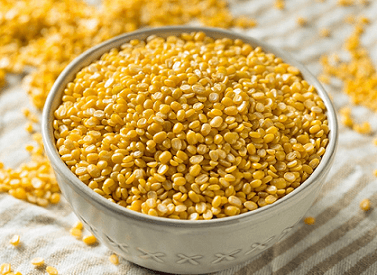
It is also known as green gram. Moong dal belongs to the Plantae kingdom, and it is a leguminous plant. Moong Dal is an extremely popular food in India. Moong Dal is a great source of protein and contains essential required nutrients. Due to its high nutrient presence, it helps in repairing and building tissues, and it builds skin, blood, cartilage, and bones. Climatic Conditions required for the production of Moong DalIt requires temperatures between ranges from 25 degrees - to 35degrees It is best grown on drained loamy soil, and the rainfall required is 60cm-90cm. States which produce moong dal at a massive scale are Bihar, Maharashtra, Andhra Pradesh, Gujrat, Orissa, Rajasthan, and Madhya Pradesh. Health Benefits
2. Masoor Dal (Lentil)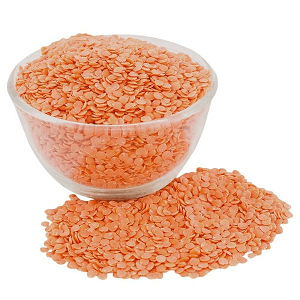
It is an important constituent of our daily diet and is widely served in Indian homes. It is commonly pronounced as Masoor ki Dal or Split red lentil. It is widely grown in India. It is without skin and yellow in colour. Nutrition DetailsQuantity-100 gram Protein-9 Gram
Total Carbohydrates-20 Gram (6%) Dietary Fiber- 8g (32%) Sugar-1.8g Cholestrol- 0mg (0%) Sodium - 2mg (0%) Potassium- 369 mg (10%) Total Fat -0.4 Gram (0%) Saturated Fat 0.1Gram (0%) Calorie -116 This pulse is from Plantae Kingdom. It is present in various types and segregated based on its size. For example: - unshelled or shelled, split or whole. The Coats of the seed can vary from deep purple to green, mottled, black, brown, grey, and tan. Shelled lentils exhibit the color of the cotyledon, and it could be green, yellow, orange or red. Types of Red - Cotyledons:
ProductionMajor producing countries are India (25%) and Canada (33%). Both countries produce 58% of the lentil in the Global. Major producing states in India: Uttar Pradesh and Madhya Pradesh are both states that account for 70% of the total production in India. The other States which produce a significant amount of Masoor Dal are Bihar and West Bengal. In Canada, Saskatchewan is the region that produces a huge amount of Masoor Dal, and it constitutes about 95% of the total production. Benefits of Masoor DalDue to the immense presence of nutrients in the Masoor dal, it has many health benefits. Masoor Dal contains Fibres, Vitamins, and Flavonoids, which have therapeutic benefits. Management of DiabetesMasoor Dal contains a high amount of carbohydrates, and fibers help in containing blood sugar levels. It is suggested that Masoor Dal should be part of their diet as it helps to stabilize blood sugar levels. Management of ObesityWhen lentil is included in the daily diet, it reduces the risk of obesity-related disease. Lentil has high fiber content there, so it gives them a sense of fulness sooner, and it reduces food intake and helps in the management of body weight. Cardiovascular Health BenefitsIntake of Pulses reduces hypertension (Reduction of Serum Cholesterol Levels) and incidence of cardiovascular diseases. Management of Cancer PreventionIntake of Masoor Dal helps in reducing the chances of breast cancer. Masoor Dal contains plant lectins, and they exhibit anti-cancer activity. Protease also contains cancer-preventing properties. 3. Toor Dal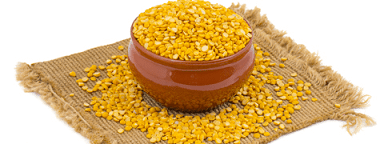
It belongs to the Plantae Kingdom and is a perennial legume. Toor dal's seed is commonly available in Latin America, Asia, and Africa. Toor dal is a major source of protein and is consumed on a wide-scale basis in India. The Scientific name is Cajanus cajan. Nutrition Table - Quantity per 100gram Protein-22 gram
Total Carbohydrate: 63g- 21% Dietary Fiber 15g (60%) Potassium: 1,392 mg (39%) Sodium: 17mg (0%) Cholestrol: 0mg (0%) Total Fat 1.5g (2%) Saturated Fat 0.3 g (1%) Calories-343 It has immense health benefits, and intake of toor dal on a daily basis will protect you from several diseases. Helps in Wound Healing: Toor Dal has an anti-inflammatory activity property. It can reduce the pain of inflammation in the wounded areas and actives the cell for tissue formation. Maintenance of Cholesterol and DiabetesToor Dal contains a significant amount of protein, and it aids in avoiding diabetes. Data shows that person who is suffering from high diabetes and cholesterol problems, for them it has been observed that taking toor dal on a regular basis helps in reducing cholesterol and sugar levels. Reduction in cholesterol happens due to the presence of high fiber content and anti-oxidant. MalariaThe toor daal leaves contain chalcone. It is an active anti-malarial, and it is used to treat jaundice. Therefore, Toor Dal may act as Anti- Malarial agent. Problems Related to DisordersToor Dal's components like leaves, flowers, and seeds are taken as an ingredient and used for the preparation of teas. This tea is used for treating various kinds of ailments: to treat various diseases like yellow fever, ulcers, infections, and urinary tract. 4. Rajma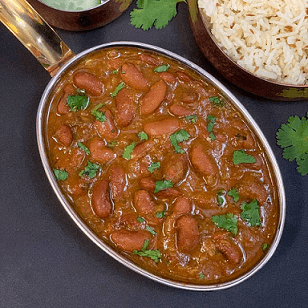
People also call this "lal lobia", "rajmah," and razma. It originated from the Indian subcontinent. They are immensely popular in countries like Pakistan, Nepal, India, and Bangladesh. Rajma is served along with rice and has been made part of the daily diet in previously mentioned countries. Rajma has the shape of kidney beans. Rajma is grown on a widescale basis in states like Karnataka, Kerala, Tamil Nadu, Uttarakhand, West Bengal, Maharashtra, Jammu and Kashmir, and Himachal Pradesh. Climatic Conditions required for the growth of RajmaIt can be grown on any soil, but the most suitable soil is well-drained loamy soil. It requires 600mm-1500mm rainfall and the temperature required is 15 degrees and 25 degrees. Health Benefits
5. Urad Dal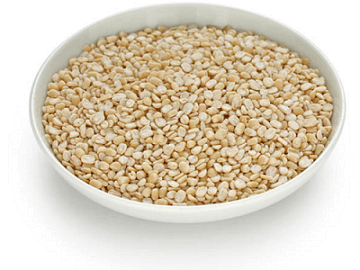
The Scientific name of Chana dal name is Vigna mungo, and it belongs to Plantae Family and it is one of the extremely popular food ingredients in India. It is also called black gram. It has originated in South Asia. It is cultivated in the northern part of Nepal and Bangladesh, the Southern part of India. Chana Dal is called mash dal in Nepal and Bangladesh. It is a legume plant, and it has also been introduced in countries like Africa, Myanmar, the Caribbean, Fiji, and Mauritius. Nutrition chart for 100gram
Vitamins
Minerals
Climatic Conditions for Urad DalIt is widely cultivated during the summer and rainy seasons. Favorable conditions for this crop: humid and hot, and the required temperature is 25 degrees to 30 degrees. SoilsBlack gram can be cultivated on soil like heavy clay to sandy soil, but it can't be grown on saline and alkaline soil. It is best grown on black cotton soils, which have the property of retaining moisture. Those soils with neutral pH are the most favorable soil for its growth. Irrigation ManagementNormally, during the rainy season, it does not require much water. During summers, the water can be provided by seeing the availability of water and the requirement of plants and soil. Its frequency and intervals depend upon weather and soil type. Usually, a crop should be getting water between 10-15 days. It requires sufficient moisture in the soil for the crop to become a plant from flower. YieldA well-grown crop can produce 12 to 15 quintals/hectare. 6. Chana Dal (Chick Pea)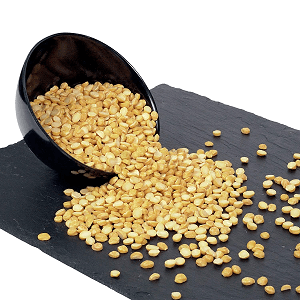
It is the oldest crop, and it's been growing since ancient times. It is popularly known as "gram", "chana," and Bengal Gram. It is taken with rice along with vegetables in India. Chana dal, when crushed severely it, turns into besan (flour) and besan has a wide variety of uses: dishes, sweets, and snacks. The scientific name is "Cicer arietinum L". It belongs to the "Fabaceae Family". States which grow Chana dal on a widescale basis are Rajasthan, Maharashtra, Madhya Pradesh, and Uttar Pradesh. Varieties of Chick PeaBased on the thickness, shape, size, and color of the seed, it can be segregated into two varieties: Kabuli Chickpea:
Desi Chickpeas:
Health Benefits
Climatic conditions required for the growth of Chana DalIt requires a good amount of moisture conditions, and a favorable temperature is 24 degree-30 degrees. It requires 65cm to 95 cm rainfall. SoilsIt can be cultivated on sandy loam, black cotton, and heavy soils. But soil which has well-drained storage is most suited for cultivation. Soils should have 5.5 to 7.0 ph. Rotten Farm Yard Manure like Diammonium Phosphate, Phosphorous, Nitrogen are best suited for the crop. Manure should be used before sowing the seed, and it should get mixed properly with soil. 7. Hari Matar (Green Peas)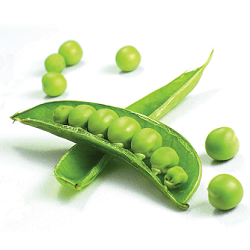
It belongs to the Leguminosae family. It is an immensely popular vegetable crop in India and is grown on a wide-scale basis. Green Pea straw can be used as fodder for livestock feeding. Some of the states which produce green peas on a large scale are Bihar, Uttarakhand, Haryana, West Bengal, Punjab, Madhya Pradesh, Karnataka, Uttar Pradesh, and Rajasthan. Health Benefits
Climatic conditions the required growth of Green Peas
SoilsWell-drained soil is best for the growth of Green Peas. Soils having good organic content will produce a good yield and the best quality of peas. The ph of the soil should be 6 to 8 for good growth. IrrigationRegular irrigation at correct intervals is advised. Pulses consume more water than cereals. Waterlogging should be avoided in the field, and it should be well-drained. 8. Chawli DalIts scientific name is Virgins Sinensis Savi. It belongs to the Leguminosae family. Some of the common names are Black-eyed Pea, Barbati, Cowpea, and Lobia. Nutrition Table
Some essential amino acids like phenylalanine, lysine, and leucine are also present. Types of Cowpea
Climatic conditions for the cowpea productionCowpeas grow well in the summer and rainy seasons, not in the winter. Moist weather is a favorable condition for the nourishment of crops. Region having low rainfall is not favorable conditions for the growth of cowpeas. SoilsCowpeas can be grown on various soil, and they are best nourished in sandy to sandy, loamy soil. Soil having organic contents helps in the proper growth of a crop. 9. Moth Dal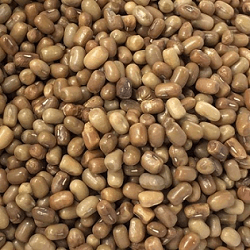
The scientific name is Vigna aconitifolia, and it belongs to the Plantae family. It is a drought-resistant legume plant cultivated in semi-arid and arid places. Some common names are dew bean, mat bean, moth bean, and matki. Protein-rich seeds, sprouts, and pods are mainly consumed in India. It is available in yellow and brown colors. Due to its drought-resistant, it has been advised to grow this crop in semi-arid regions of Africa. The US grows Moth for fulfilling its green manure crop, fodder, and pasture needs. It is rich in potassium, magnesium, calcium, manganese, zinc, and vitamin B9. Major producing states are Maharashtra, Gujrat, Rajasthan, Uttar Pradesh, Madhya Pradesh, and Karnataka. Rajasthan's 86% of the area is used for Moth production, and therefore Rajasthan is the largest cultivator of Moth. Countries in which Moth dal is produced are Thailand, the United States of America, parts of Asia, and Australia. Climatic conditions required for the growth of Moth The required temperature is 24 degrees- 32 degrees, and this crop does not get affected if the temperature reaches 45 degrees celsius. It requires rainfall of around 500-750 mm, and it can also be grown in 300 mm of rainfall. SoilsIt does not require any specific soil for its growth. The soil of the North-Western part of India is best suited for cultivation. The soil has poor dunes with less organic content, poor fertility rate, and well-drained soil is good cultivation of Moth Dal. The suitable range of Ph is 3.5-10. The best sowing period is from May-June. This crop does not demand additional fertilizer. It can be grown on abandoned land, which has less fertility and poor organic content. Harvesting is very difficult for this crop, and it is one of the negative limitations of the crop.
Next TopicList of Punjabi Sad Songs
|
 For Videos Join Our Youtube Channel: Join Now
For Videos Join Our Youtube Channel: Join Now
Feedback
- Send your Feedback to [email protected]
Help Others, Please Share










